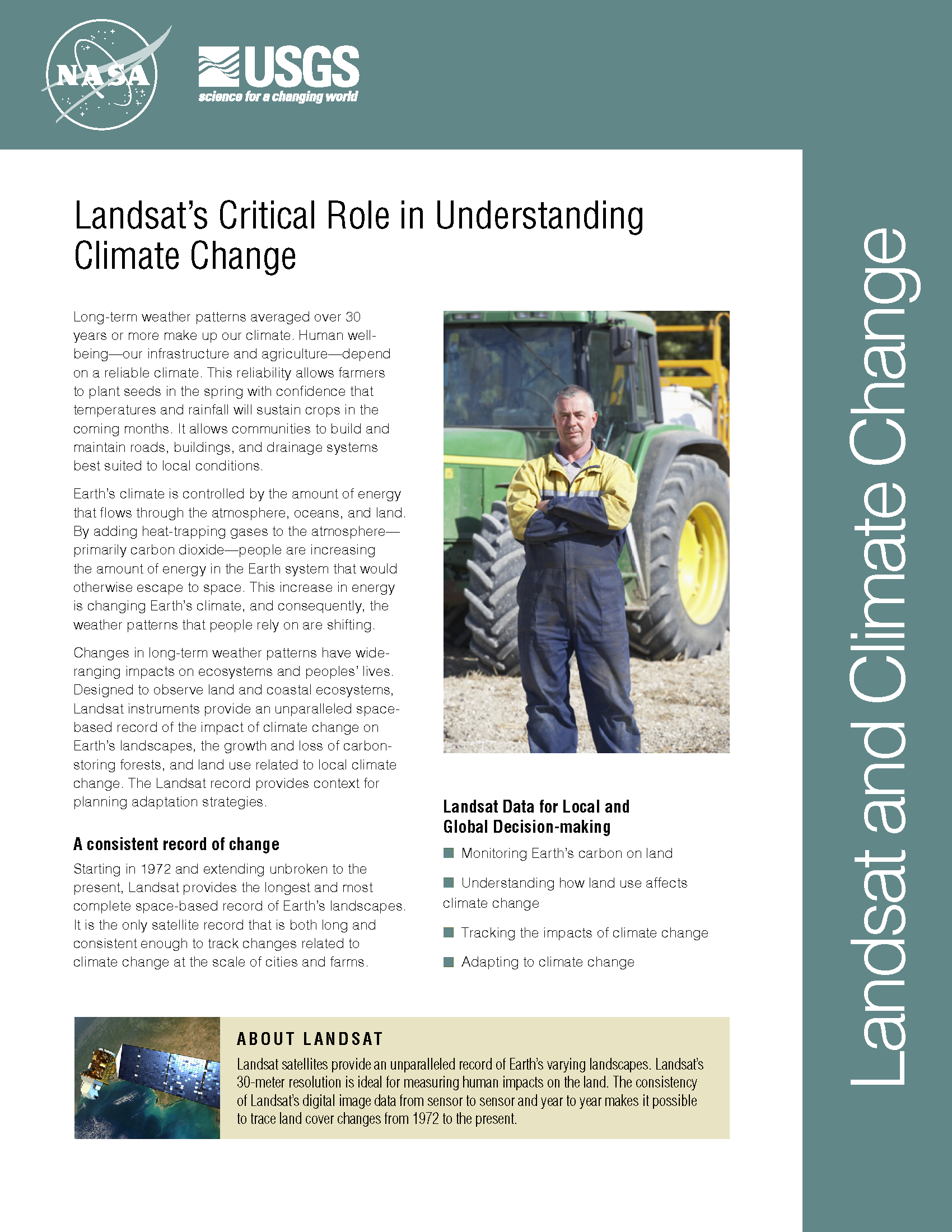Landsat's Role in Understanding Climate Change
Long-term weather patterns averaged over 30 years or more make up our climate. Human well-being—our infrastructure and agriculture—depend on a reliable climate. This reliability allows farmers to plant seeds in the spring with confidence that temperatures and rainfall will sustain crops in the coming months. It allows communities to build and maintain roads, buildings, and drainage systems best suited to local conditions. Earth’s climate is controlled by the amount of energy that flows through the atmosphere, oceans, and land. By adding heat-trapping gases to the atmosphere—primarily carbon dioxide—people are increasing the amount of energy in the Earth system that would otherwise escape to space. This increase in energy is changing Earth’s climate, and consequently, the weather patterns that people rely on are shifting. Changes in long-term weather patterns have wide-ranging impacts on ecosystems and peoples’ lives. Designed to observe land and coastal ecosystems, Landsat instruments provide an unparalleled space-based record of the impact of climate change on Earth’s landscapes, the growth and loss of carbon- storing.
A New Way To Map Drought and Water Use Worldwide
Every month, the National Oceanic and Atmospheric Administration’s (NOAA) Center for Climate Prediction has a drought briefing by teleconference to identify the latest drought areas in North America. ARS scientists
Study Shows More Shrubbery in a Warming World
Scientists have used satellite data from NASA-built Landsat missions to confirm that more than 20 years of warming temperatures in northern Quebec, Canada, have resulted in an increase in the
Consequences of Aspen Die-off
Trembling aspen are dying. No tree species in North America has a broader habitat and no other is as large (a single clone can be a hundred acres in size).
World Inventory of Barrier Islands Jumps by One Third
A new Landsat-based survey of worldwide barrier islands has discovered over 650 previously unrecognized islands. Length-wis,e the global stretch of barrier islands is now 37 percent greater than formerly thought.
EarthSky Interview with Robert Bindschadler: First ever image mosaic of entire Antarctica detail
Scientists have created a mosaic of digital images collected from space showing the frozen continent of Antarctica—one of the most remote and least known places on Earth—in amazing detail for
Landsat Data Addresses Needs of California Growers
With the capability to provide valuable information about individual farm fields, vineyards, and orchards, NASA satellites soon will provide California growers in the San Joaquin Valley with important information about


